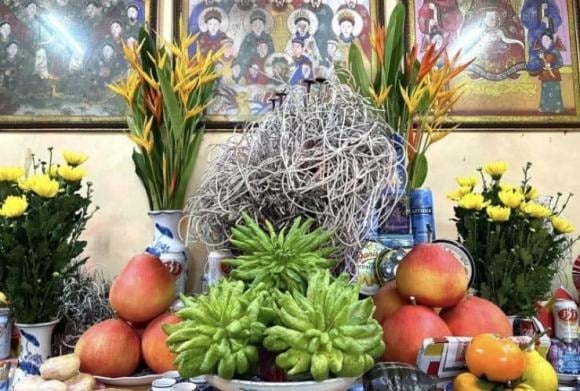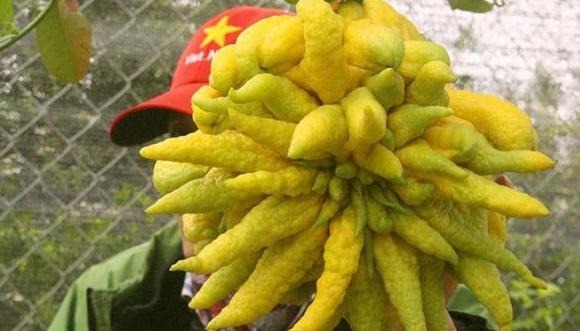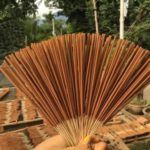The Meaning of Buddha’s Hand Fruit
Many people who buy Buddha’s hand fruit often use it for burning incense and then discard it, thinking that it is not suitable for consumption. However, the fact is that this fruit can be used for medicinal purposes.
Buddha’s hand fruit is a type of fruit in the citrus family, and the appearance of the fruit is often shaped like the hand of Buddha, so many people believe that it is a sacred fruit and is often used in worship. The outer skin of Buddha’s hand fruit has a rough surface and contains fragrant essential oils, similar to grapefruit peel. Inside, the fruit has a spongy pulp similar to grapefruit, but without segments.

The name “Buddha’s hand” is given to this fruit because its shape resembles the hand of Buddha. In worship ceremonies, Buddha’s hand fruit is popular due to its symbolic representation of the Buddha’s hand, an important symbol in Buddhism. Many Vietnamese also believe that Buddha’s hand brings luck and protection from the Buddha to the family.
Therefore, Buddha’s hand fruit is often used in worship ceremonies to protect and bring blessings to the homeowner, thanks to its fragrance and ability to preserve the “spirit” of the Buddha and ancestors in the house.
Is Buddha’s Hand Fruit Edible?
Buddha’s hand fruit is a type of fruit originating from India. Many people usually buy Buddha’s hand fruit for burning incense and then discard it, thinking that it is not suitable for consumption.
However, few people know that Buddha’s hand fruit cannot be eaten directly, but it can be used as an ingredient in processing valuable medicines.

How to Choose and Arrange Buddha’s Hand Fruit for Burning Incense
Buddha’s hand fruit has small to large fruits, with each part resembling fingers pointing out like Buddha’s hand. Some people prefer Buddha’s hand fruit with fingers pointing outwards, indicating expansion to attract wealth, while others prefer Buddha’s hand pointing inwards, symbolizing protection and embrace.
When burning incense, it is advisable to choose Buddha’s hand fruit with a greenish-yellow or yellowish-orange color, avoiding overly green or ripe fruits. Non-ripe fruits should be avoided. Choose fruits that are not sunburned, with evenly shaped fingers to create a beautiful and multiple hand shape, and longer fingers will look better than shorter ones.
When placing Buddha’s hand fruit on the altar, it can be placed on a separate plate or in a five-fruit tray, but the Buddha’s hand fruit should be placed in the highest position. If there is only one Buddha’s hand fruit and you want to burn incense for a long time, you can insert it into a glass of water for the branch to soak in the water, but the fruit should not be soaked. The Buddha’s hand fruit inserted into the water will develop roots and absorb fresh water for several months.
Tips for Keeping Buddha’s Hand Fruit Fresh
To keep Buddha’s hand fruit fresh and beautiful, people often use white wine to clean the dirt on the fruit before burning incense, avoiding washing with cold water. If placed on the altar, you can place an additional bowl of water and a few vitamin B1 tablets, then place the Buddha’s hand branch in that water. After a while, the branch will develop roots and have the effect of absorbing water to nourish the fruit.
In addition to being used in Tet worship ceremonies, Buddha’s hand fruit is also used on occasions such as birthdays, inaugurations, completions, and housewarmings, and is often displayed in offices, administrative agencies, or meetings. Owning a Buddha’s hand plant in the family or workplace can bring luck, health, and belief in a more favorable and successful new year.
The Significance of Vietnamese Incense-burning Culture: Do you truly understand?
Incense is a cherished tradition in Vietnamese culture that has been passed down through generations. Lighting incense is a way to show respect, gratitude, and reverence towards our ancestors, grandparents, and divine beings. It is a beautiful and meaningful practice that holds a special place in the hearts of Vietnamese people.


































